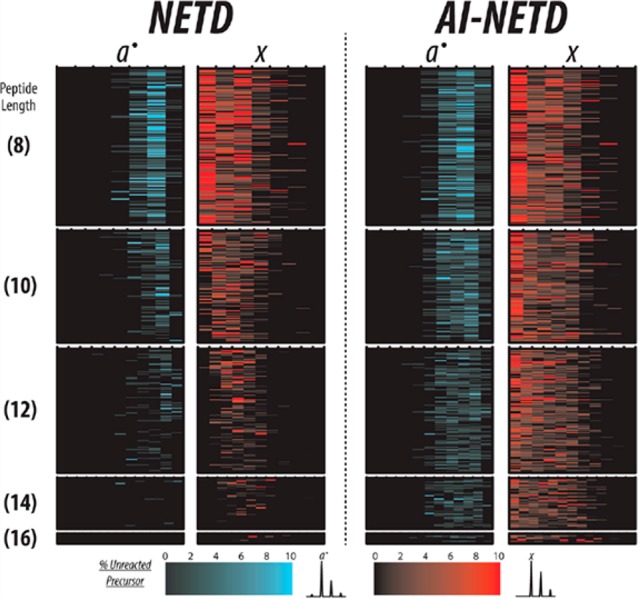Figure 10.

Fragment map of peptides identified with both NETD and AI-NETD. Here, each row is a unique peptide and each subcolumn corresponds a peptide backbone bond. The numbers in parentheses to the left show peptide length in number of residues, and all peptides shown here are z = −2. With NETD, a•- and x-type fragments decrease in number and intensity as precursor charge density decreases (i.e., as peptide length increases). AI-NETD maintains superior fragment ion generation even with decreasing precursor charge density, greatly increasing peptide dissociation and sequence coverage compared with NETD. This research was originally published in Molecular & Cellular Proteomics. Riley, N. M.; Rush, M. J. P.; Rose, C. M.; Richards, A. L.; Kwiecien, N. W.; Bailey, D. J.; Hebert, A. S.; Westphall, M. S.; Coon, J. J. The Negative Mode Proteome with Activated Ion Negative Electron Transfer Dissociation (AI-NETD). Mol. Cell. Proteomics2015, 14, 2644–266 (ref (330)). Copyright the American Society for Biochemistry and Molecular Biology.
